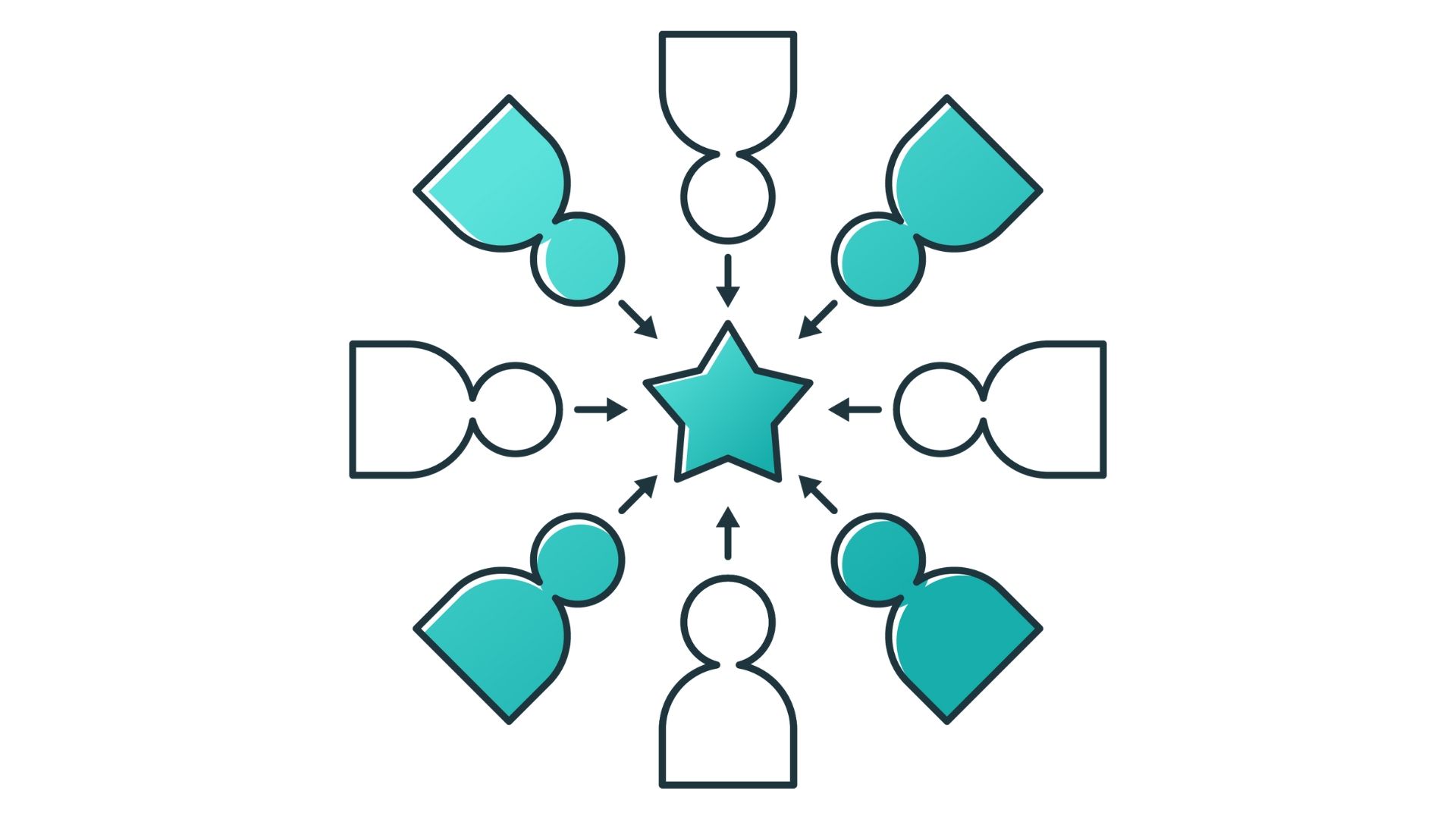Insight 16 June 2025
Crafting Tomorrow's Team
The Vision Architect

Studies from across 20 countries are converging on an interesting finding about team identity.
The Aspirational Identity Effect
Steffens et al. (2024) investigated whether teams perform better when focused on "who we are" versus "who we want to become." Using the Visual Identity Leadership Scale, they found teams that oriented around aspirational identity consistently demonstrate superior outcomes.
The Aspirational Identity Effect
Steffens et al. (2024) investigated whether teams perform better when focused on "who we are" versus "who we want to become." Using the Visual Identity Leadership Scale, they found teams that oriented around aspirational identity consistently demonstrate superior outcomes.
The Methodological Shift
Following Reicher and Hopkins' framework, these "identity entrepreneurs" employ future-focused inquiry rather than problem-focused analysis. Instead of diagnosing current gaps, they facilitate collective visioning processes around desired future states.
The Methodological Shift
Following Reicher and Hopkins' framework, these "identity entrepreneurs" employ future-focused inquiry rather than problem-focused analysis. Instead of diagnosing current gaps, they facilitate collective visioning processes around desired future states.
Evidence from the Field
Teams engaged in aspirational identity development show three key improvements namely increased creative problem-solving, higher innovation risk tolerance, and improved adaptability. The underlying mechanism appears to be enhanced collective efficacy or the group's shared belief in achieving desired outcomes.
Evidence from the Field
Teams engaged in aspirational identity development show three key improvements namely increased creative problem-solving, higher innovation risk tolerance, and improved adaptability. The underlying mechanism appears to be enhanced collective efficacy or the group's shared belief in achieving desired outcomes.
Implementation Realities
Van Knippenberg's (2024) research highlights the need for "credible stretch" with ambitious vision setting tethered to realistic capability assessment to balance inspiring possibilities with achievable interim goals.
Implementation Realities
Van Knippenberg's (2024) research highlights the need for "credible stretch" with ambitious vision setting tethered to realistic capability assessment to balance inspiring possibilities with achievable interim goals.
Observable Indicators
Success markers include increased future-oriented language, proactive problem-solving behaviours, and voluntary skill development aligned with aspirations. Teams shift from reactive problem-solving to proactive opportunity creation.
The research builds a compelling case: team identity can be intentionally architected with measurable results.
van Dick, R., et al. (2018). Identity leadership going global: Validation of the identity leadership inventory across 20 countries. Journal of Occupational and Organizational Psychology, 91(4), 697-728.
van Dick, R., et al. (2021). Identity leadership, employee burnout and the mediating role of team identification. International Journal of Environmental Research and Public Health, 18(22), 12081.
Steffens, N. K., et al. (2024). Introducing and validating a single-item measure of identity leadership: The visual identity leadership scale (VILS). British Journal of Social Psychology, 63, 1658-1680.
van Knippenberg, D., et al. (2024). Leader group prototypicality: A replication of average member versus ideal-type operationalization effects. Journal of Leadership and Organizational Studies. Advance online publication.
Observable Indicators
Success markers include increased future-oriented language, proactive problem-solving behaviours, and voluntary skill development aligned with aspirations. Teams shift from reactive problem-solving to proactive opportunity creation.
The research builds a compelling case: team identity can be intentionally architected with measurable results.
van Dick, R., et al. (2018). Identity leadership going global: Validation of the identity leadership inventory across 20 countries. Journal of Occupational and Organizational Psychology, 91(4), 697-728.
van Dick, R., et al. (2021). Identity leadership, employee burnout and the mediating role of team identification. International Journal of Environmental Research and Public Health, 18(22), 12081.
Steffens, N. K., et al. (2024). Introducing and validating a single-item measure of identity leadership: The visual identity leadership scale (VILS). British Journal of Social Psychology, 63, 1658-1680.
van Knippenberg, D., et al. (2024). Leader group prototypicality: A replication of average member versus ideal-type operationalization effects. Journal of Leadership and Organizational Studies. Advance online publication.
Further Reading
Copyright © 2025 Potenture
Don't miss your chance to join The Purposeful Life


Seven Core Capabilities Guide Available Now!

